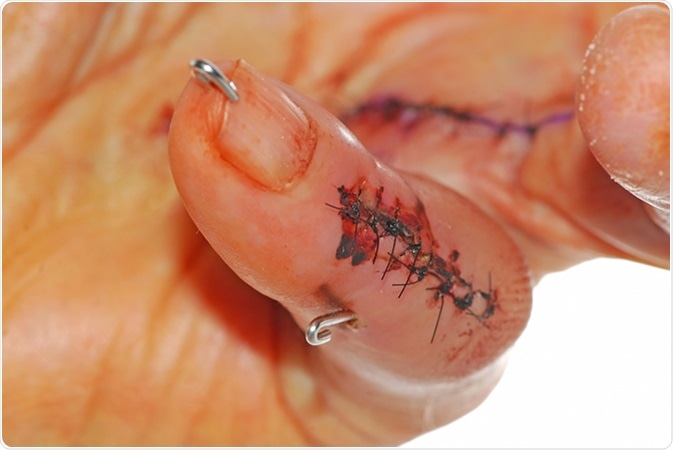Dupuytren's contracture, also known as Dupuytren's disease, occurs with a thickening of the tissue fibers in the layer below the palm and skin of the fingers. The condition often does not cause pain, but it can be discomforting. The contracture involves how the tissue becomes thick and tight. It shortens, essentially causing the fingers of the hand to become curled and take on a spiral shape. The condition is more predominant in men, especially those more than 40 years old.
Diagnosing the Condition
Dupuytren's starts as a lump, or nodule, then slowly evolves to finger contracture. In this manner, it differs from other causes of contracture. When examining patients, doctors should record the location of any nodules, as well as the existence of dimples, pitting of the skin, and tenderness. If a physician notes the presence of any contractures, they should record the angles of the contractures at the metacarpophalangeal joint, as well as at the proximal interphalangeal joint. The extent and history of progression also should be recorded.
The Hueston tabletop test should be used as part of the diagnosis. The diagnosis is positive if a patient is not able to place their fingers flat on a table. If a finger can turn toward the center of the hand, clinicians will determine the extent of the deformity and the severity of the condition.
Doctors will determine the extent of the condition by applying a grading system. At grade 1, the condition appears as a thick lump, or nodule, and as a band in the muscles of the palm. This band, or stretched line, could evolve or lengthen, as well as cause some pitting of the skin to occur. Grade 2 appears as a band surrounding the tendon, impeding the ability to extend the affected finger. Grade 3 involves the inability to fully straighten the finger.
Dupuytren’s appears to be a type of disorder in which the mutated gene is located on one of the nonsex chromosomes. It is a dominant gene. A person only requires one mutated gene to be affected by the disorder. Dupuytren's and diabetes also have a significant association, with up to a 33% prevalence of the condition in diabetics.
Dupuytren’s could involve both hands at the same time, although one may be more significantly involved than the other. The fourth, fifth, third, and second fingers, in decreasing order, are the fingers most often affected by the condition. The disease usually evolves more rapidly in those less than 50 years of age. In about one-tenth of cases, the disease regresses without being treated. The consumption of alcohol and the use of tobacco often increase the potential for the disease, and that surgery will be required.
While researchers have found Dupuytren's in patients of all races, certain populations seem to experience many of the reported cases of the disease, including the northern Scottish, Norwegian, Icelandic, and Australian populations.
Treating the Condition

Stainless Steel Pins used to stabilize joints of man's hand after surgical procedure to relieve Dupuytren's Contracture of hand and little finger. Taken a few days before removal of sutures and pins. Image Credit: Warren Price Photography / Shutterstock
If the extent of Dupuytren’s is mild, a physician may not recommend any treatment because the condition may not worsen. In severe cases, medication is a possible route. Another approach would involve a fasciotomy, which is a minor surgical procedure in which a thin sheath of fibrous tissue is cut. In more severe instances, additional surgery may be needed to correct the condition.
More specifically, a Grade 1 diagnosis may be manageable with little treatment. Injecting the lumps with a steroid would ease the condition. Surgery may be required if there is impaired functionality, or severe contracture or deformity. There may be need for surgery if the contracture of the metacarpophalangeal joint or if contracture of the proximal interphalangeal joint is extensive.
Still, the condition may recur. An alternative is a minimally invasive approach which involves using needles to pierce the contracting cords, weakening them so that they can be broken manually, usually by snapping them. One study indicated that injecting patients every month with the steroid triamcinolone acetonide for up to five months, with the potential for reinjecting them again after a six month wait, can cause the disease to regress.
Further Reading